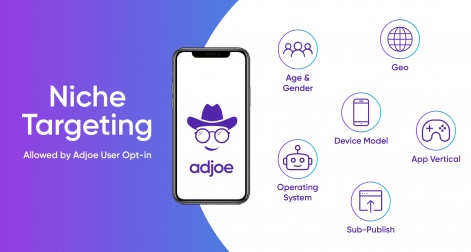2021 began with a turbulent start; as the app market has reached new peaks over the past year, the industry has been shaken by the tremors of new regulations forcing user acquisition managers to rethink their UA strategies.
Yes, we are talking about the IDFA apocalypse. Apple’s Identifier For Advertisers (IDFA) allows app companies to measure the success of their targeted advertising efforts by connecting downloads to the ads they were displayed in, as well as gives them the opportunity to target users based on historic device data.
With their historic need to push the boundaries of standard industry practices, app marketers will once again have to take a step back and re-evaluate their practices. Which in this case, means finding and identifying new ways to reach their top quality users. While the removal of the IDFA remains exclusively an iOS decision, the industry sits on the edge of its seat to see if Google will follow suit. This has left many marketers asking what’s next, and what are the options to continue reaching their best quality users.
Opt-in to bridge the gap between privacy and personalisation
On a more positive note, the need for change means new user-centric possibilities can emerge. The goal of IDFA’s removal has been a harsh provision to safeguard users’ rights to privacy, which coincides with political pushes towards achieving stricter regulations of user-level data. This gives user opt-in’s the power to save niche level targeting and personalised in-app monetisation. While it is unlikely that user-level opt-ins will save the industry as a whole, they do offer app companies a way to meet the needs of user acquisition managers who want to directly reach their top-performing users.
It is easy to quickly write off Apple’s recommendation towards the use of their App Tracking Transparency solution, which requires users to opt-in in order to benefit from personalised targeting options. However, opt-in centred solutions can be a powerful tool to not only reach your ideal user base, but also earn the highest ARPDAUs.

At adjoe, we have built our products around creating a personalised user experience dependent on user opt-in. The reason this has been a central pillar to our business is that adjoe’s ad format, called Playtime, is built on a system of granular targeting, which includes a user’s age, gender, and interests, independent of Google Advertiser ID.
By focusing on predictive algorithms and user consent, adjoe is able to create a premium campaign strategy, which can then be easily measured by user acquisition managers. This in turn benefits the publishers using Playtime as a monetisation solution, since the ARPDAUs of these users can surpass $0.75 in the US.
The benefits of opt-in formats like Playtime are clear for both advertisers and publishers. However, it leaves the question, how do the users respond? In the case of adjoe, the Playtime format rewards users in the in-app currency of the publisher’s app for their time spent playing the 3rd party games. As the users see value in exchanging their data for in-app currency, the Playtime experience has an overall user opt-in rate of 90 per cent. The favourable acceptance of the Playtime opt-in is no surprise, given the positive user relationship with rewarded ad formats seen by the 2020 Mobile Games Advertising Report.
As we leave the monumental 2020 behind us, 2021 will create a challenging but innovative landscape for the future of our industry. With that in mind, here are a few predictions:
- When paired with truly engaging ad units like rewarded video, opt-ins can continue to be an effective tool for monetisation and niche user targeting.
- Contextual Targeting will step in to fill the void that the depreciation of the IDFA leaves behind as it provides tremendous amounts of data to marketers, which can help them identify the type of user they are looking to target.
- Google will remain committed to its use of GAID. At least for now.
Let us hear your thoughts on the future of niche targeting and the use of the opt-in on our weekly Clubhouse event, Mobile Games Monday. Follow our adjoe CEO, Jonas’ Thiemann at @jonast to join the conversation.
Guest Author Niels Beenen, Director of Demand Partnerships at adjoe:
Niels Beenen was born in 1985 and is originally from the Netherlands. Niels has been a prominent figure in the adtech space for the past 15 years. Prior to taking on the role of Director of Demand Partnerships at adjoe, he worked as VP of Performance for EMEA at AdColony and previously worked for both Glispa in Berlin and Criteo in London.
About adjoe:
adjoe rewards users for the time they spend in games they love through its Playtime ad unit, creating engagement for advertisers and fostering retention for app publishers. The ultimate result is a virtuous cycle for all stakeholders and increased eCPMs. adjoe’s customer base includes major games studios such as JamCity, Playrix, and Zynga — and is part of the Applike Group, a mobile app marketing platform provider. Learn more at https://adjoe.io/






















